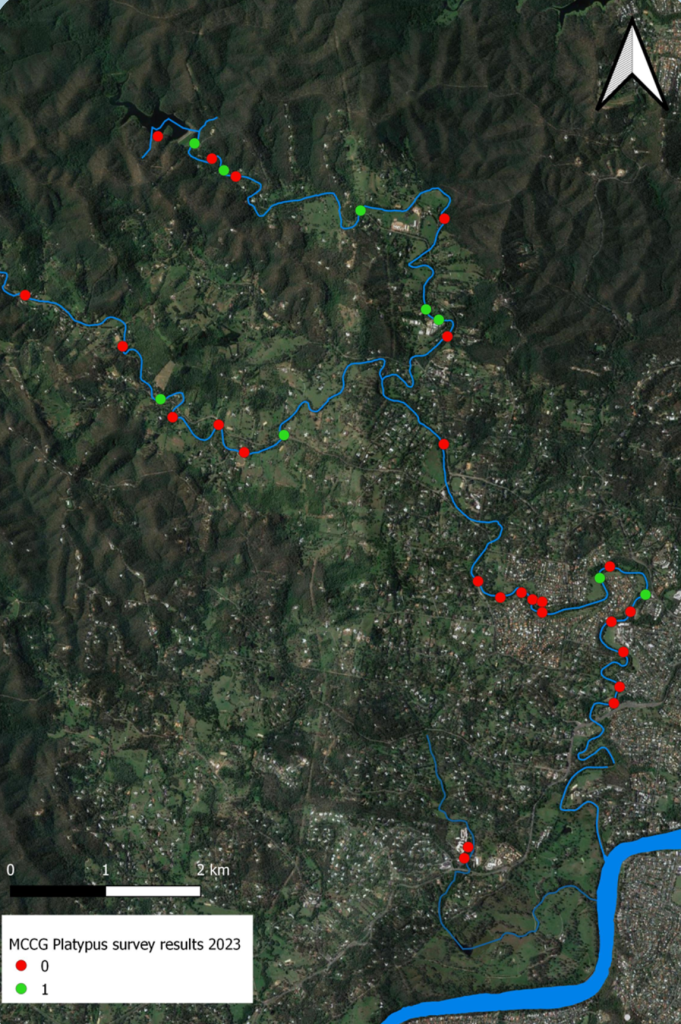This year’s annual platypus survey saw 47 volunteers cover 34 sites across Moggill, Gold and Farm Creeks.
There were 9 individual platypuses sighted across Moggill and Gold Creeks. An exciting sighting was recorded at the foot bridge in the Gold Creek Reservoir. After the 2022 floods,we didn’t have sightings of the resident platypus and it was thought it may have been washed downstream. It was great to confirm presence in the pool again.
Platypuses had been in the last few weeks in the usual hotspot area of Huntington Estate, but they eluded us in that area on the survey morning.
Platypuses rely on water for their essential activities, including feeding, mating, and navigating through creeks. Pools play a crucial role in their habitat because they can effectively search for food in water depths ranging from 1 to 5 meters. Currently, the creeks are fragmented due to the dry winter weather, potentially leaving platypuses isolated in the deeper pool areas. While platypuses are capable of traveling overland to seek water, this increases their vulnerability to predators like foxes, cats, and dogs, as they lack the speed to outrun these threats. As a result, these pools are expected to serve as vital refugia for platypuses during the upcoming years of drought.
Citizen Science is an important tool to help monitor wildlife populations. Thank you to all the volunteers who joined bright and early to help gain valuable data on the population. Thank you to the Team Leaders that helped navigate the volunteers to sites and to the Kenmore District Girl Guides Queensland for organising the post survey breakfast.
Footage from of a platypus in lower Gold Creek can be see here. https://www.youtube.com/watch?v=RPED7ketkus

Tamielle Brunt
B. App. Sc. (Wildlife Science), PhD.

